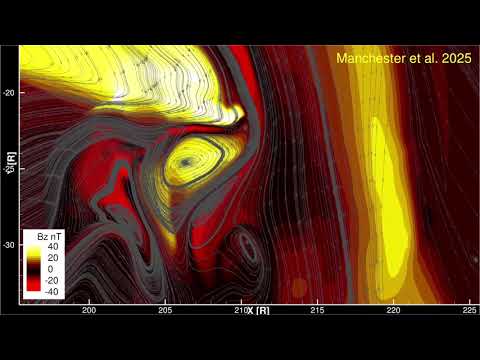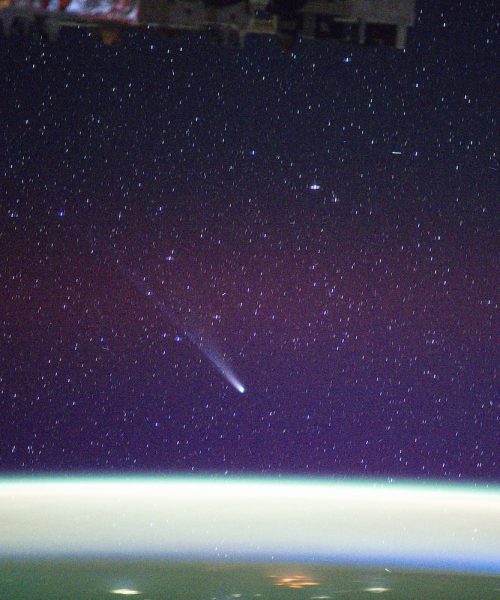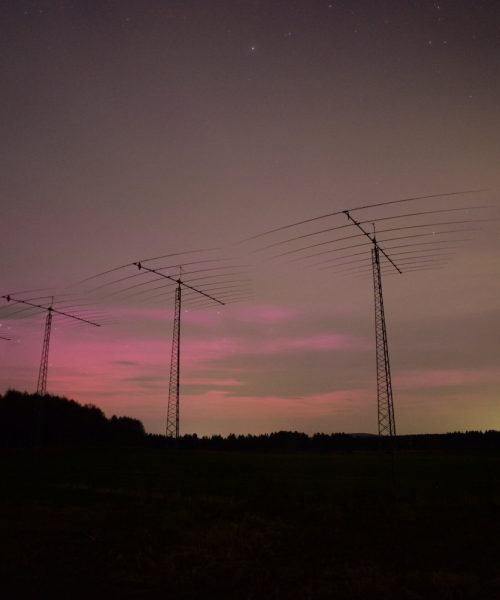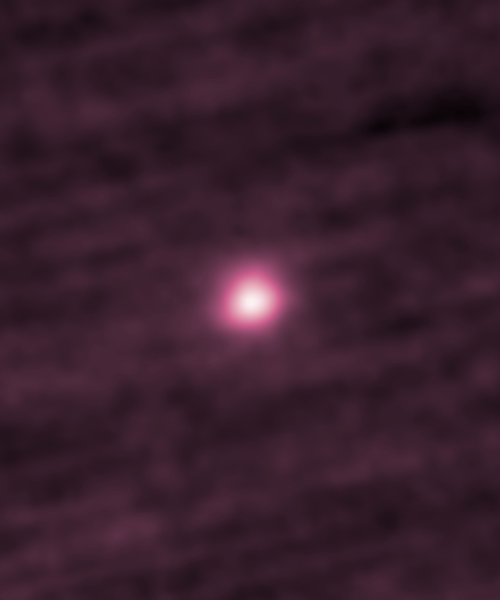Just like Earth’s severe thunderstorms, solar storms can cause their own kinds of havoc. In May 2024, flares erupting from the sun’s surface sent massive plumes of charged plasma towards the planet. Their intense geomagnetic forces ultimately tripped power lines, scrambled satellite orbits, and even forced some airplanes to alter their flight paths.
Unlike the global array of monitoring tools available to meteorologists, astronomers have far fewer avenues to watch for oncoming cosmic blasts. But according to advanced computer simulations run by researchers at the University of Michigan (UM), we’re even less prepared for what they describe as “space tornadoes.” Based on their findings published October 6 in The Astrophysical Journal, the researchers believe one solution may involve a constellation of spacecraft monitors—including one outfitted with solar sails.
Hard-to-spot storms
Solar wind involves a complex, dynamic interplay of fluid energy, just like Earth’s wind. Experts have long analyzed the most intense examples known as coronal mass ejections (CMEs). These fast, dense plasma clouds span an average of 34 million miles across, but existing computer simulations can handle variants as narrow as 7 million miles wide.
However, solar storms don’t always produce such vast emissions. Sometimes, the sun produces comparatively small flux ropes measuring only 3,000 to 6 million miles wide—falling far short of previous simulation capabilities. Those space tornadoes can still harm Earth’s electrical grids and digital systems. Recently, researchers including UM climate and space scientist Chip Manchester designed a completely new simulation system to account for the smaller, harder-to-detect occurrences. The resulting data indicates that these space tornadoes aren’t to be trifled with, either.
“Our simulation shows that the magnetic field in these vortices can be strong enough to trigger a geomagnetic storm and cause some real trouble,” Manchester said in a statement.
The team’s models suggest that many of these space tornadoes form as CMEs and pass through slower moving solar wind. The interactions with the solar wind subsequently toss out spinning plasma formations, similar to how a snowplow pushes snow to the side of the road. Sometimes these tornadoes simply dissipate, but in other cases they eventually smash into nearby streams of solar wind. Telescopes aimed at the sun may scour for CMEs, but they aren’t equipped to flag these tornado-like flux ropes.
“This is a matter of national security,” added researcher and study co-author Mojtaba Akhavan-Tafti. “We need to proactively find structures like these Earth-bound flux ropes and predict what they will look like at Earth to make reliable space weather warnings for electric grid planners, airline dispatchers and farmers.”

A SWIFT solution
Akhavan-Tafti and colleagues explained that solar wind only creates geomagnetic storms when the magnetic field is strongly oriented southward. Experts already use spacecraft positioned between Earth and the sun to keep watch for direct, oncoming solar storms. However, the sun can eject plasma clouds in any direction. A CME on the side of the sun that is opposite to Earth is still liable to create smaller space tornadoes whose path is eventually directed towards the planet. These opposite side of the sun vortexes are the ones that would pass unnoticed under the current constellation system.
Manchester likened the situation to trying to monitor a hurricane from afar using information gathered from a single wind gauge.
“You’d see a change in the measurements, but you wouldn’t see the storm’s entire structure. That’s the current situation with single-spacecraft systems,” he said. “We need viewpoints from multiple space weather stations.”
One solution may be a project led by Akhavan-Tafti called the Space Weather Investigation Frontier (SWIFT). Conceived as part of a NASA mission concept study, the proposal would see four identical spacecraft launched into a triangular pyramid formation about 200,000 miles apart from one another. A fifth hub spacecraft would then deploy as the pyramid’s apex pointed at the sun. SWIFT’s setup could then monitor solar wind fluctuations as they travel towards Earth, with a positioning that speeds up warning times by 40 percent.
There is one major drawback without additional modifications, however. To fight the sun’s gravitational pull, SWIFT’s apex probe would require a ridiculous amount of fuel. But a solution may already be in the works as part of NASA’s separate Solar Cruiser mission. If the spacecraft featured a deployable aluminum sail about one-third the size of a football field, its surface could capture enough photon energy to act as a solar anchor in space.
“If there are hazards forming out in space between the sun and Earth, we can’t just look at the sun,” said Akhavan-Tafti.
Currently, SWIFT remains a mission proposal instead of a concrete plan of action. With a three-year mission life, it’s also intended as a stepping stone to larger, more comprehensive monitoring systems. But as much as space tornadoes and solar sails sound like the stuff of science-fiction, they both will likely have large roles to play in humanity’s cosmic future.






